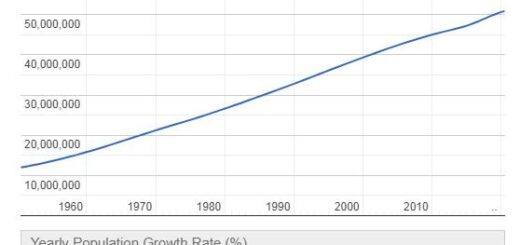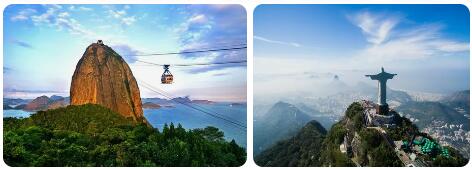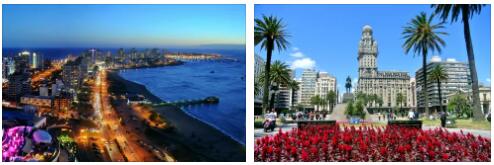How to Get to Bolivia
There are no direct flights from cities in Russia and the CIS to Bolivia; you will have to fly with two transfers, often by different airlines. The most popular “neighborhood” transfers are in Chile and Peru. The most convenient connection options can be found with Iberia (via Madrid and Lima), Air France (via Paris and Caracas), Lufthansa (with transfers in Frankfurt and Lima) and Alitalia (via Rome or Milan and Caracas). In any case, you will have to spend more than a day on the road – from 27 hours, taking into account connections.
Note: according to allcitypopulation, the population of Bolivia is 11.83 million (2021).
Flights to Santa Cruz are usually cheaper than to La Paz, since in the latter case a special surcharge is applied for the high altitude of the airport (recall: La Paz airport is the highest in the world, it is located at an altitude of 4058 m above sea level).
Visa to Bolivia
Citizens of Russia and CIS countries do not need a visa to visit Bolivia.
But it’s still worthwhile to arrange medical insurance for the entire duration of the trip in advance.
Customs
In Bolivia, you can import 400 cigarettes or 50 cigars, or 500 g of tobacco and 5 liters of alcoholic beverages of any strength duty-free. There are no restrictions on the import and export of foreign and national currency. It is forbidden to import medicines and medicines that are not certified in the country, food products of animal origin, fruits and seeds. It is forbidden to export objects of historical and cultural value, live wild animals and birds, as well as coca leaves.
Useful phone numbers
Embassy of Bolivia in Moscow: Serpukhov Val, 8, apt. 135-137; tel.: (495) 954-06-30, 958-08-55; Web site
Embassy of Russia in La Paz: Avenida Walter Guevara Arce, 8129, casilla 5494; tel.: (2) 278-64-19; Web site
Telephone codes of some cities: La Paz – 2, Sucre – 64, Santa Cruz – 3, Cochabamba – 42.
The traditional alcoholic drink of Bolivia is chicha corn vodka, which is usually drunk from shallow bowls with a sloping base (so that it is impossible to drink without drinking to the bottom).
Tourist safety
In general, Bolivia is considered a safe country for tourists. Recently, there has been some increase in the level of crime in relation to foreigners – but even in these cases, the matter usually does not go beyond fraud and extortion. Often come across all sorts of “fake friends” – from “certified” guides to fake tourist police who supposedly care about the peace of the guests. Attempts to lure you to “only today” authentic festival should be stopped with a resolute no! In the evening, it is better to call a taxi by phone. In crowded places, you must follow the standard precautions: keep things with you and keep an eye on your wallet. You can drink only mineral water, it is also recommended to wash fruits and brush your teeth. You can take pictures of local residents only with their permission.
Don’t forget high SPF sunscreen and hats – in the highlands of Bolivia, the intensity of UV rays is 20 times higher than sea level. You need to be especially careful when visiting Lake Titicaca – the sun’s rays there, in addition, are reflected by the water surface.
For the same reason, in the first few days of your stay in the country, it is better not to plan serious physical exertion – dizziness, weakness and nausea, as well as other manifestations of altitude sickness, are possible.
Transport
The most popular means of transport in Bolivia are planes and buses. Air traffic in the country is very well developed (due to the inaccessibility of many areas for land transport), there is an airport in almost every more or less populated town. Domestic flights are operated by several national carriers: Aerosur – the largest, Aerocon, Amaszonas, BoA, TAM and GOL. Flights of Bolivian airlines also fly to neighboring countries, the most popular destinations are Peru, Venezuela and Argentina.
When traveling by plane in Bolivia, you must pay a special tax at check-in – 15 BOB. And on departure from the country they will ask you to fork out for 25 USD.
Bus service connects both large cities and modest villages of Bolivia. Buses mainly run during daylight hours, after 18:00 activity is noticeably reduced. The transport is owned by a variety of private companies, so it does not have a single standard of comfort: you can either spend a pleasant trip in a modern bus with air conditioning and sanitary facilities, or shake in a prehistoric rattletrap along country roads. When planning a bus trip, it is better to personally come to the bus station in advance and make sure that the transport is in good condition. Road conditions in the country are mostly good. Prices are more than acceptable: on average, you should focus on 3-4 BOB. In addition to buses, intercity minibuses plow the expanses of Bolivia – the fare is even lower, there is practically no comfort, but departures on popular routes are very frequent.
In Bolivia, various kinds of strikes are not uncommon, during which roads are barricaded. When going on a road trip, it makes sense to make sure that the paths are clear in advance, otherwise you risk spending a few “pleasant” nights curled up on the bus seat.
The rail connection in the country is not very popular, but there are several routes of interest to tourists. These include the Oruro-Uyuni branch, laid across an extremely picturesque landscape and literally passing through a high-mountainous Andean lake. In cities, you can ride municipal buses and taxis, which is preferable – inexpensive and much more convenient.
Rent a Car
In order to rent a car, you must have an international driver’s license issued no later than 2 years ago, a credit card (or cash for a deposit – usually around 1000 USD) and be over 25 years old. The rental price starts from 45 USD per day. In addition to this, each kilometer traveled is paid – about 0.20 USD. You can rent a car for a week for 400-500 USD. Given the chaotic actions of other drivers and not the most convenient roads to drive, especially in rural mountainous areas, it may be wiser to arrange a “buy” for a day with a taxi driver with a car or use a fixed route transfer.



